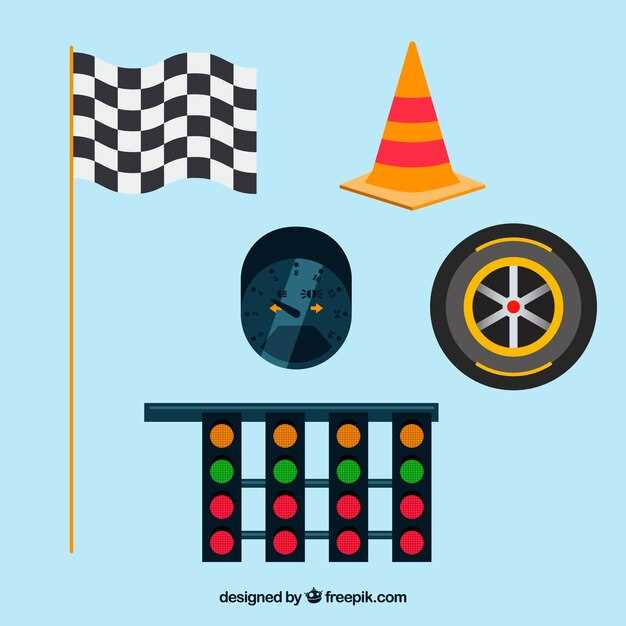
In the world of motorsport, the use of flags plays a crucial role in ensuring the safety of drivers, crew members, and spectators alike. These flags serve as visual signals that communicate essential information regarding track conditions, potential hazards, and race regulations. Understanding the meanings behind these flags is vital for any participant or fan who wants to comprehend the dynamics of a race event.
Each flag in the motorsport lexicon has a specific purpose, making it imperative to grasp what each one indicates. From warning of impending danger to signaling the end of a session, these colorful pieces of fabric are more than just decorations; they are key elements in maintaining safety on the track. This article will delve into the various types of track safety flags and their meanings, highlighting their importance in promoting a safe racing environment.
By familiarizing yourself with track safety flags, you will not only enhance your understanding of race communication but also appreciate the rigorous safety protocols that govern motorsport events. Join us as we explore the nuances of each flag and uncover how they contribute to the overarching goal of ensuring that racing remains an exciting yet safe sport for everyone involved.
Key Color Codes for Track Safety Flags
Track safety flags are crucial for communicating important information to drivers during a race. Understanding the color codes of these flags is essential for adhering to safety rules and ensuring a smooth racing experience. Each flag color represents specific conditions on the track that drivers must be aware of.
The most commonly used flag colors include:
Green Flag: This flag signals the start of the race or the resumption of racing after a caution period. It indicates that the track is clear and safe for racing.
Yellow Flag: The yellow flag is used to indicate caution. This flag warns drivers of potential hazards, such as accidents or debris on the track. Drivers must reduce speed and maintain their position until the hazard is cleared.
Red Flag: A red flag signifies that the race is stopped immediately. This is typically due to dangerous conditions or accidents that require attention. Drivers must slow down and be prepared to stop.
Blue Flag: The blue flag is used to notify drivers that a faster car is approaching. It advises them to allow the faster vehicle to pass safely, promoting smooth racing and minimizing conflicts on the track.
Black Flag: A black flag indicates that a driver must stop their vehicle, often for a rule violation or mechanical issues. Failure to comply can result in penalties or disqualification.
White Flag: The white flag signals that there is one lap remaining in the race. It informs drivers to prepare for the conclusion of the event.
Checkered Flag: The checkered flag is displayed at the finish line to signify the end of the race. Drivers should return to the pit area once they receive this flag.
By understanding and respecting these flag color codes, drivers can ensure their safety and the safety of others on the track. Familiarity with the rules associated with each flag is critical for anyone participating in or observing racing events.
Common Situations Requiring Specific Safety Flags

Understanding the various situations that necessitate the use of safety flags is crucial for ensuring the well-being of both participants and spectators during racing events. Each flag serves a distinct purpose, alerting individuals to specific conditions on the track.
One of the most recognizable flags is the yellow flag, which indicates caution. This flag is often displayed when there is a hazard on the track, such as debris or an accident, requiring drivers to slow down and be prepared to stop. It is essential for maintaining order and preventing further incidents.
The red flag is used to halt the race due to significant safety concerns, such as severe weather, major accidents, or track obstructions that render it unsafe to continue. This flag instructs all participants to return to the pit lane and stop their vehicles, ensuring that emergency personnel can safely address the situation.
In conditions of limited visibility, such as fog or heavy rain, the white flag may be used to indicate that safety vehicles or personnel are on the track. This flag advises drivers to exercise extreme caution and be aware of potential roadblocks that could impact their progress.
When a vehicle is experiencing mechanical problems, the blue flag is waved to signal the driver that they are about to be overtaken. This allows the driver to be aware of approaching competitors and facilitates safe passing maneuvers, minimizing the risk of collisions.
Finally, the green flag signals that the track is clear and the race can continue. This flag is shown at the start of the race or after a yellow flag situation has been resolved, indicating that it is safe for drivers to resume full racing speed.
By familiarizing themselves with these specific safety flags and their meanings, all participants can contribute to a safer racing environment, ultimately enhancing the experience for everyone involved.
Rules for Proper Flag Use in Motorsports

In the high-speed environment of motorsports, effective communication is crucial for ensuring the safety of drivers, teams, and spectators. Understanding and adhering to the rules surrounding flag use is essential for maintaining a safe racing atmosphere. Below are key guidelines that govern proper flag use in motorsports.
- Know the Flag Colors: Familiarize yourself with the meanings of each flag color, as they convey different messages. Common colors include:
- Yellow: Caution, slow down, no overtaking.
- Red: Stop racing immediately; dangerous conditions ahead.
- Green: All clear; race conditions resume.
- White: Slow vehicle on track; be prepared to take action.
- Blue: Faster car approaching; prepare to yield the track.
- Black: Driver must return to the pits; rule violation.
- Proper Display: Flags should be displayed prominently and clearly to ensure visibility for all drivers. Ensure that flag marshals are positioned at strategic points around the track.
- Timing: Flags must be used promptly and consistently. Delays in flagging can lead to dangerous situations, particularly under caution or hazardous conditions.
- Communication: Team communication is vital. Ensure all team members understand the flag signals, particularly during pit stops and strategy changes.
- Training: Regularly train flag marshals and officials on the proper use and interpretation of flags to maintain consistent safety protocols.
- Adherence to Rules: Enforce strict adherence to flag signals by drivers. Ignoring flags can lead to penalties, disqualification, or serious accidents.
By following these rules for proper flag use, all participants in motorsports can contribute to a safer racing environment, ultimately preserving the integrity of the sport while prioritizing safety. Understanding flag signals not only benefits drivers but also enhances the experience for fans and teams alike.






